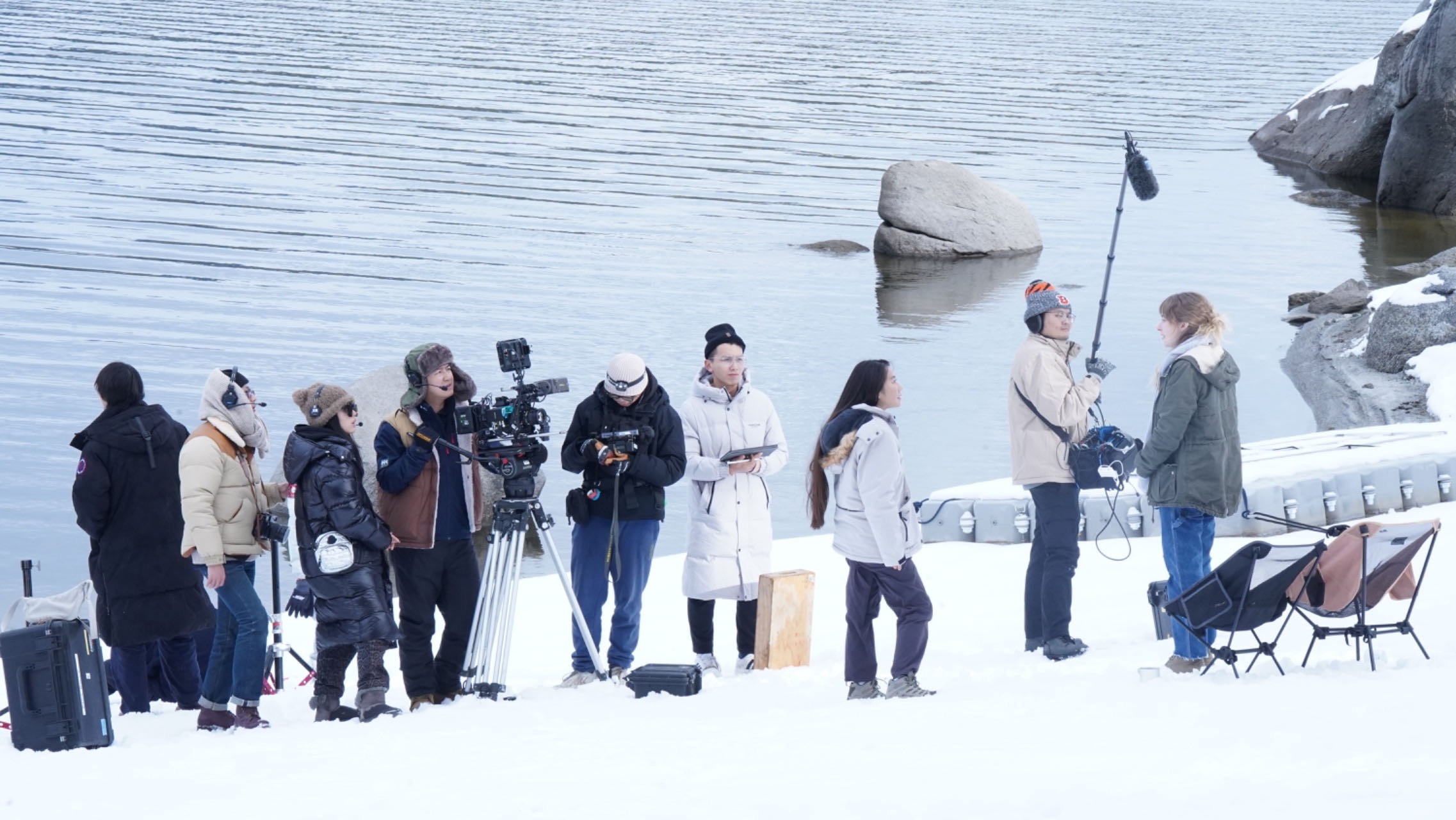We caught up with the brilliant and insightful Eno Q a few weeks ago and have shared our conversation below.
Eno, looking forward to hearing all of your stories today. We’d love to start by getting your thoughts on what you are seeing as some the biggest trends emerging in your industry.
Since the end of last year, I’ve noticed the quiet rise of a trend in vertical short dramas. These are episodes lasting only one to one and a half minutes, totaling around 80 episodes, designed for vertical viewing, often advertised on social media platforms like TikTok, and then directing traffic to standalone apps. After watching the first few episodes for free, users must pay or watch ads to unlock the rest.
Currently, the leading platform in the vertical short drama industry has surpassed monthly revenues of ten million dollars, with consistent growth each month. This trend represents a perfect fusion of social media and film, offering tens of thousands of new opportunities.
1. Innovative Business Model with Direct Monetization
Viewers can watch the first 5-10 episodes for free, but must pay or watch ads to access subsequent episodes. This model leads to varying revenue for each series, with popular series earning more, while less appealing ones also provide tangible revenue insights. To my knowledge, the highest return on investment in the U.S. vertical short drama scene has reached a 30-fold increase, with production costs around $150,000 and user payments exceeding $4 million. Although this includes promotional and streaming costs, it represents a novel business model that offers more direct feedback from viewers to the creators.
2. Increased Job Opportunities for Industry Professionals
Having been a screenwriter for many years, I understand the lengthy development cycle of projects and their vulnerability to cancellation for various reasons. Over the past seven years, I’ve encountered over 25 TV script projects, 20 of which were paused for either sensible or bizarre reasons. The high financial requirements for TV drama development, navigating between platforms and investors, can lead to project failures without even reaching the filming stage.
With the advent of vertical short dramas, many unknown or temporarily unproductive professionals have taken their first steps. The production cycle for a vertical short drama is much shorter, taking only 10-15 days for what would be an 80-minute film, with at least seven pages filmed daily and about a month for post-production and release. This accelerated cycle provides ample job opportunities, allowing practitioners to gain experience, network, start with low-cost projects, and quickly build their portfolios.
3. Innovation Based on Social Media
The success of vertical short dramas is closely tied to social media. Unlike traditional TV dramas, they align with the browsing mode of short videos, fitting seamlessly into platforms like TikTok. While you might need at least a half-hour to watch an episode on Netflix, short videos require only five minutes of spare time. Vertical short dramas integrate well with this format, having a natural advantage in marketing and attracting new viewers.
Moreover, they offer cross-industry collaboration opportunities, such as brand integration, where brands can collaborate with dramas before major promotions, or in live streaming, allowing lead actors to interact directly with the audience via social media.

Great, appreciate you sharing that with us. Before we ask you to share more of your insights, can you take a moment to introduce yourself and how you got to where you are today to our readers.
I am a writer and screenwriter, currently serving as the showrunner for a short drama production company. My passion for writing began in my student days, publishing several short and long stories in magazines since middle school, and I have also published my own novels. Riding the wave of the times, I caught the trend of novel adaptations into screenplays. At that time, many film companies were buying the rights to novels suitable for adaptation into TV dramas, and my novels were selected and sold for screen adaptations, opening a deeper opportunity for me to enter the film and television industry.
In my novel “Yi Nuo Qian Jin”I started from the perspective of the original novel’s author, beginning to learn screenwriting skills and audition language. This allowed me to consider the entire content creation from another angle and laid a solid foundation for my subsequent transition to screenwriting.
My first screenwriting work was the historical romance drama “The Legend of Jinyan,” in collaboration with Tencent Video, which achieved over 1.5 billion views in China, officially marking my entry into the film and television industry. Subsequently, I began to form my own screenwriting team, producing several web series and TV dramas, such as “The Sweetest Secret” with iQIYI, which also topped the trending searches. Gradually, my screenwriting studio gained fame in China, collaborating with renowned directors, top film companies, and excellent actors. I also gradually transitioned from a screenwriter to a showrunner, considering and managing the overall project advancement from another perspective.
With the surge of vertical short dramas in the U.S., I quickly decided to leverage my screenwriting studio and showrunner experience to enter the fray. This was not an easy decision for me, as the budget for vertical short dramas is very low, typically around $150,000 to $180,000 for the entire project, while my team as a professional commercial screenwriter team, is much higher. However, I saw not the short-term costs but the long-term opportunities, an irresistible chance for any creator: to be closer to my audience.
In past projects, I had many ideas that could not be realized, either due to budget constraints or disagreements with producers, directors, and investors, or due to external factors, forcing script changes. In the creation of longer dramas, countless compromises were made, and the final product might be entirely different from my original vision. Vertical short dramas, however, offer the best opportunity to let the audience decide.
With a short production cycle and rapid online release, typically within two months of script completion, audiences can watch these dramas on their phones and express their preferences through comments, likes, and payment metrics. This significantly narrows the gap between the creative team and the audience, allowing us to quickly adjust subsequent projects based on viewer feedback.
Currently, my short drama production company in the U.S. has about 15 employees, all seasoned professionals in the film and television industry, graduates from top ten film schools in the U.S. Together, we form Dreamood Pictures, committed to creating quality short dramas, continuously iterating on script content to bring the most exciting stories to every viewer.
What do you find most rewarding about being a creative?
The most rewarding aspect of being an artist or creative lies in the soulful resonances it fosters: firstly, with the audience and readers, and secondly, with fellow creators. In the realm of filmmaking and storytelling, it’s like unveiling a universe corner by corner, inviting the audience into a world of unfolding narratives. The true magic happens when viewers resonate with the characters I’ve crafted, bringing them to life in a shared emotional reality. For example, in one of our international projects, the male lead had a dual identity: as a financial magnate and the controlling force of his family, he shared a tumultuous love with the female lead; simultaneously, he was a divine warrior, a warm man who suddenly enters her life. We were initially concerned about realizing this complex character as envisioned in the script. However, the actor’s exceptional performance brought this character vividly to life, exceeding our expectations.
Furthermore, the collaboration with other creatives forms the second pillar of fulfillment. Immersed in building a fictional universe and storyline, every team member pours their heart into making the vision tangible. United by a common goal and dream, we weave together individual strengths and passions, crafting a collective masterpiece that not only tells a story but also embodies our shared creative spirit. For instance, after casting the actor for the dual-identity role, his portrayal inspired us to deepen the character’s complexity. The art department, inspired by “The Phantom of the Opera,” created a unique mask for one of his identities, while the screenwriters enhanced his dialogues and behaviors, giving each identity a distinct personality. The directors employed visual language to differentiate these personas, showcasing the entire crew’s ability to bring this character to dynamic life through our combined efforts. This synergy and mutual inspiration make the artistic journey incredibly rewarding.
How’d you build such a strong reputation within your market?
What has helped build my reputation within the market is multifaceted. Firstly, staying true to my original passion has been fundamental. I began in this industry as a born communicator, for whom expression is a lifelong mission. I treasure every opportunity to connect with the audience, ensuring that my initial drive is reflected in my work, which consistently serves as my best introduction.
Secondly, the unwavering support and collective effort of my team have been crucial in upholding our reputation. The synergy within the team, where everyone contributes their best, is indispensable for our sustained success and positive standing in the industry.
Lastly, our commitment to innovation and exploration of new themes has distinguished us, especially in an arena where most vertical short dramas focus on love stories. We venture into more experimental and imaginative territories, such as soul and time travel, and even body-swapping narratives between leads. This approach not only sets us apart but also showcases our versatility and willingness to push creative boundaries, further cementing our reputation in the market.
Contact Info:
- Instagram: enovibe2024


